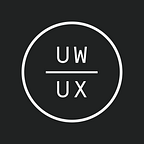Breaking Into UX Design
By Jewel Villapando and Jasmine Jiang
🚀 Introduction
Are you considering a career transition into the exciting and rapidly growing field of User Experience (UX) design? Whether you come from a different discipline or career background, making the switch to UX design is possible and can be a rewarding experience. In this article, we will explore the steps you can take to successfully transition into UX and begin your journey towards becoming a UX designer.
📚 Understanding the Field
To transition successfully into UX design, it is important to have a comprehensive understanding of its foundations.
What is UX Design?
UX design is a multidisciplinary field that combines aspects of research, psychology, business, design, and technology. Its primary goal is to enhance user experience by improving the usability, accessibility, and overall experience of a product or service.
What do UX Designers Do?
UX designers apply their understanding of user needs through research and testing, identify problems, and provide innovative solutions. They make products usable, enjoyable, and accessible by creating wireframes, prototypes, and collaborating cross-functionally with other teams.
If you are interested in…
Understanding user behaviour, problem-solving, and creativity, UX design might be a perfect fit! Skills in research, critical thinking, and collaboration are valuable assets for aspiring UX designers.
💥 Breaking into UX Design
Now that you’ve gained a bit of context as to what UX design is and whether or not it might be something you enjoy, here’s how you can actually get started! There are a number of soft and hard skills that UX designers need, in addition to a few important software and design tools that are prevalent in the industry.
Soft Skills:
In addition to essential communication and problem-solving skills, designers possess specific soft skills that are relevant to their field. Mastering the ability to be empathetic towards clients and users, adapting to design changes driven by user testing and industry trends, and of course, being creative to devise distinctive and innovative yet user-friendly design solutions are three fundamental skills essential for UX designers.
Above all else, UX designers prioritize how users interact with their solutions. The end goal is for any user, to be able to use a product with ease. Sometimes, this will mean avoiding certain design choices and weighing usability accessibility over aesthetics.
Hard Skills:
Moving into the more technical side of things, here are some skills that UX designers use in their day-to-day roles as part of the design process!
Wireframing, prototyping, and an understanding of visual design are the first steps to start creating a solution. These skills are ones honed through practice with software which we will touch on next. You’ll be able to streamline your design process once you are comfortable creating low, mid, and high fidelity mockups and prototypes that are supported by a solid foundation in visual balance.
This takes us into skills such as conducting user research, interviews, surveys, user and usability testing, and focus groups are all methods used to test a designer’s solution and look for areas of improvement. By testing your design, you can verify whether your solution solves the users problem and if it is a usable design.
Finally, a basic understanding of coding languages can distinguish you from your peers in the industry. Although this is not necessarily a prerequisite for UX designers, it is an excellent supplementary skill that can allow designers to better understand the feasibility of designs, which can lead to a more efficient and holistic understanding of design while allowing for a more efficient design process.
Software and Design Tools:
Of course, no designer is able to design without the right tools. Some of the most popular industry-standard design tools that a UX designer is expected to know are Figma and Adobe XD — these are tools that allow you to apply those hard skills of making mockups and prototyping. If you aren’t familiar with what these two softwares are, they are interface designing apps that allow you to create the layouts of whatever app or website you may be designing. Apart from these tools though, a huge part of UX design is the usability testing that comes after you’ve created your designs so be sure to hone your soft and hard skills as well!
🏆 Conclusion:
Transitioning into UX design, whether from completely unrelated or design-adjacent fields, is a daunting but exciting endeavour. UX design is a field that has really boomed in recent decades, and is a unique career choice that can appeal to many. If you have an interest or think you may have an interest in pursuing user experience design, we highly encourage you to pursue it! Designing solutions and seeing them come to life to fulfill a need or solve a problem is an incredibly rewarding experience and we wish you all the best of luck in your pursuits!
